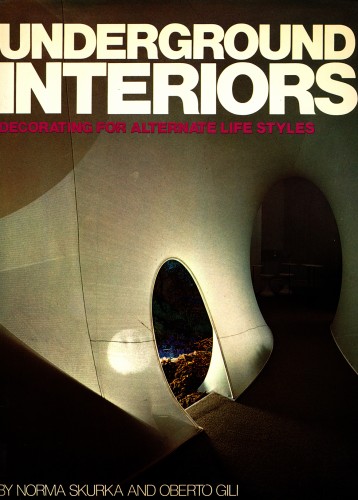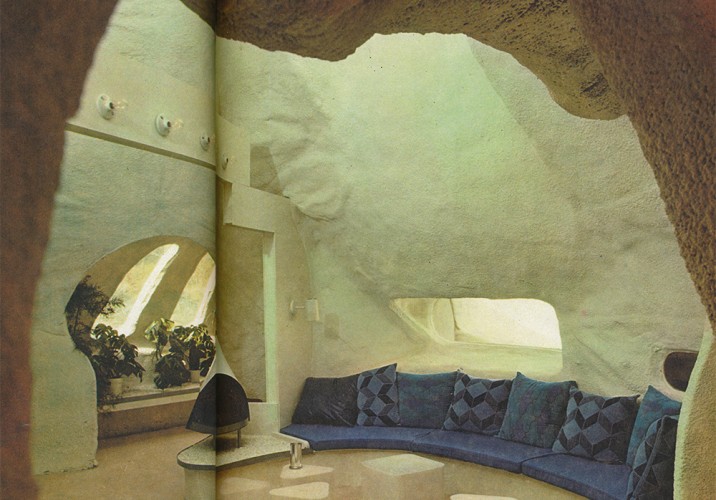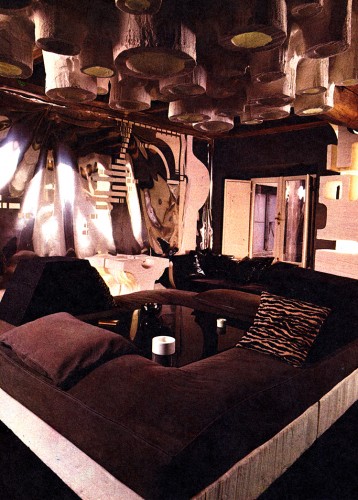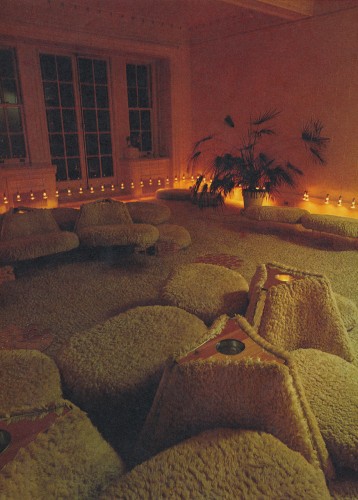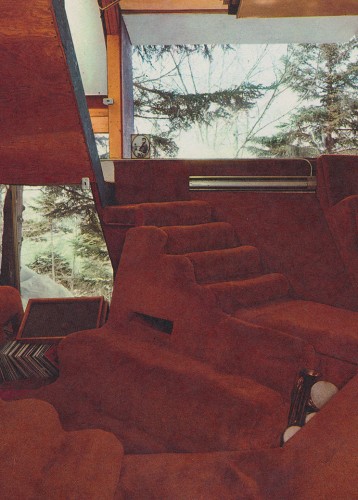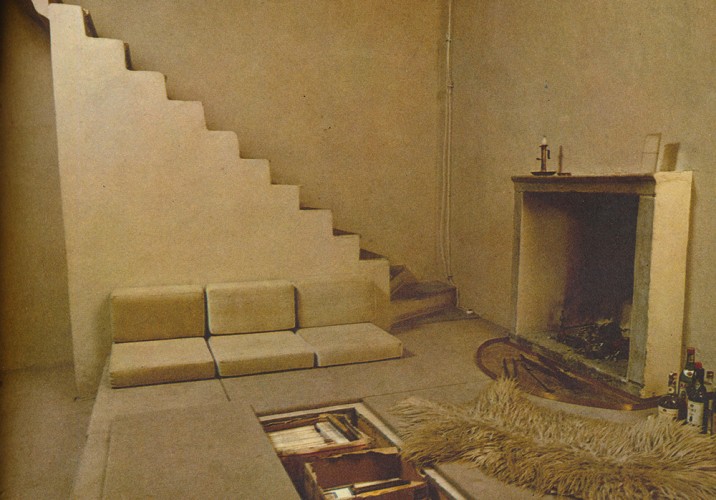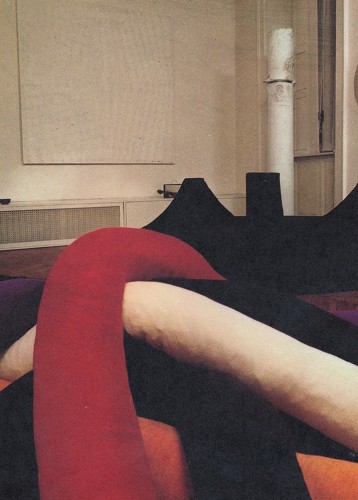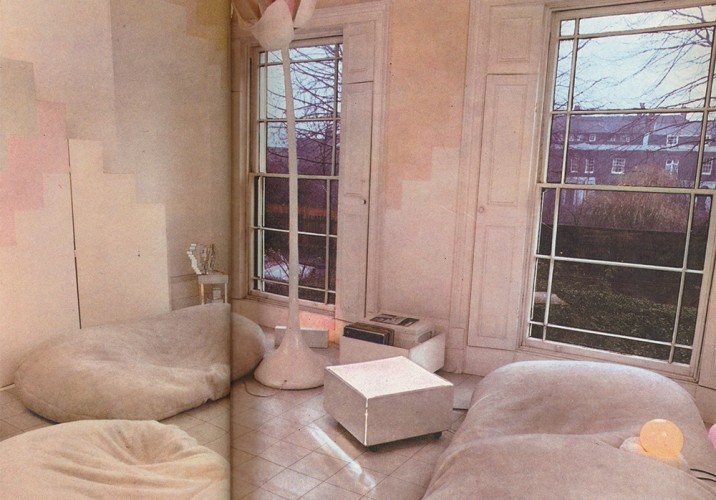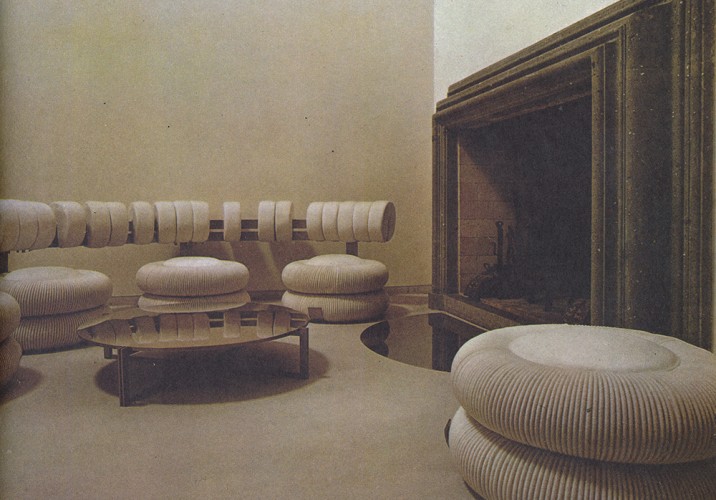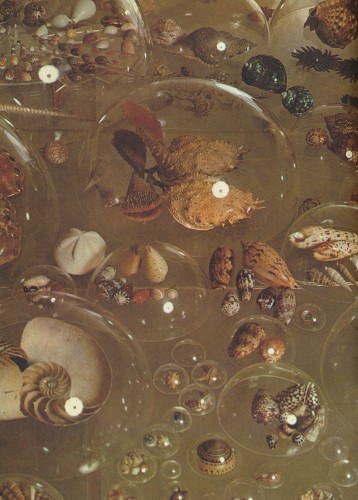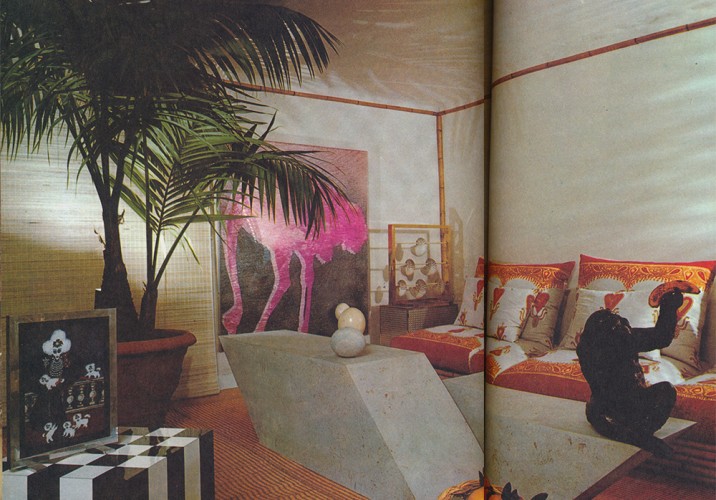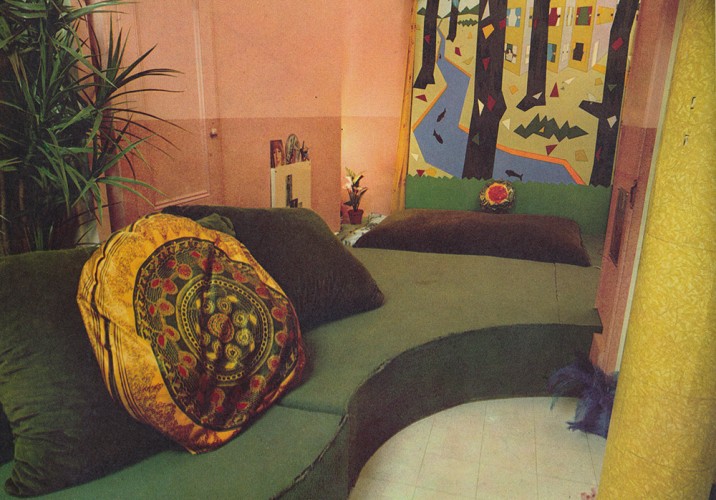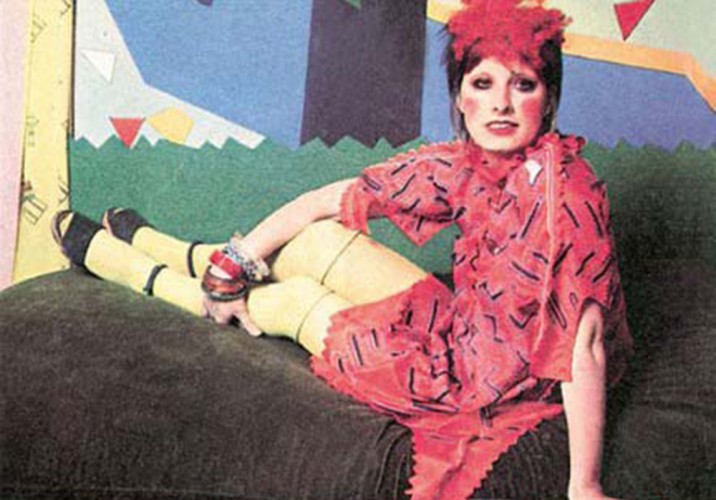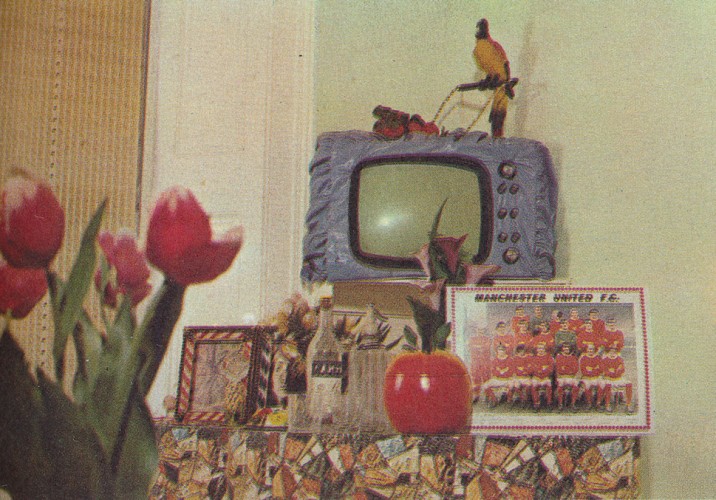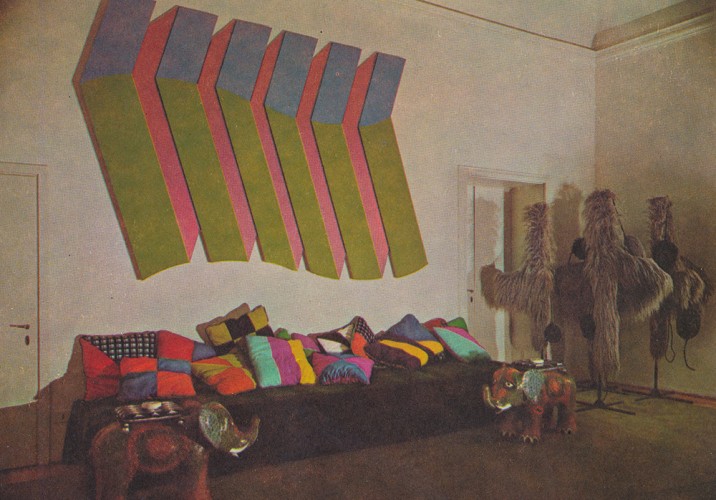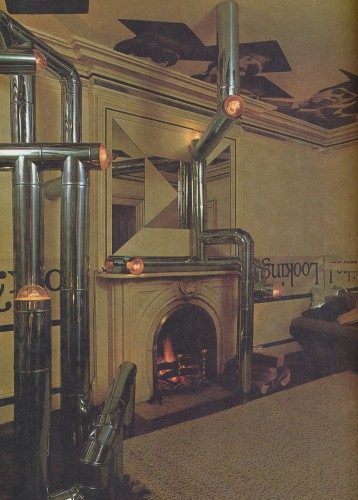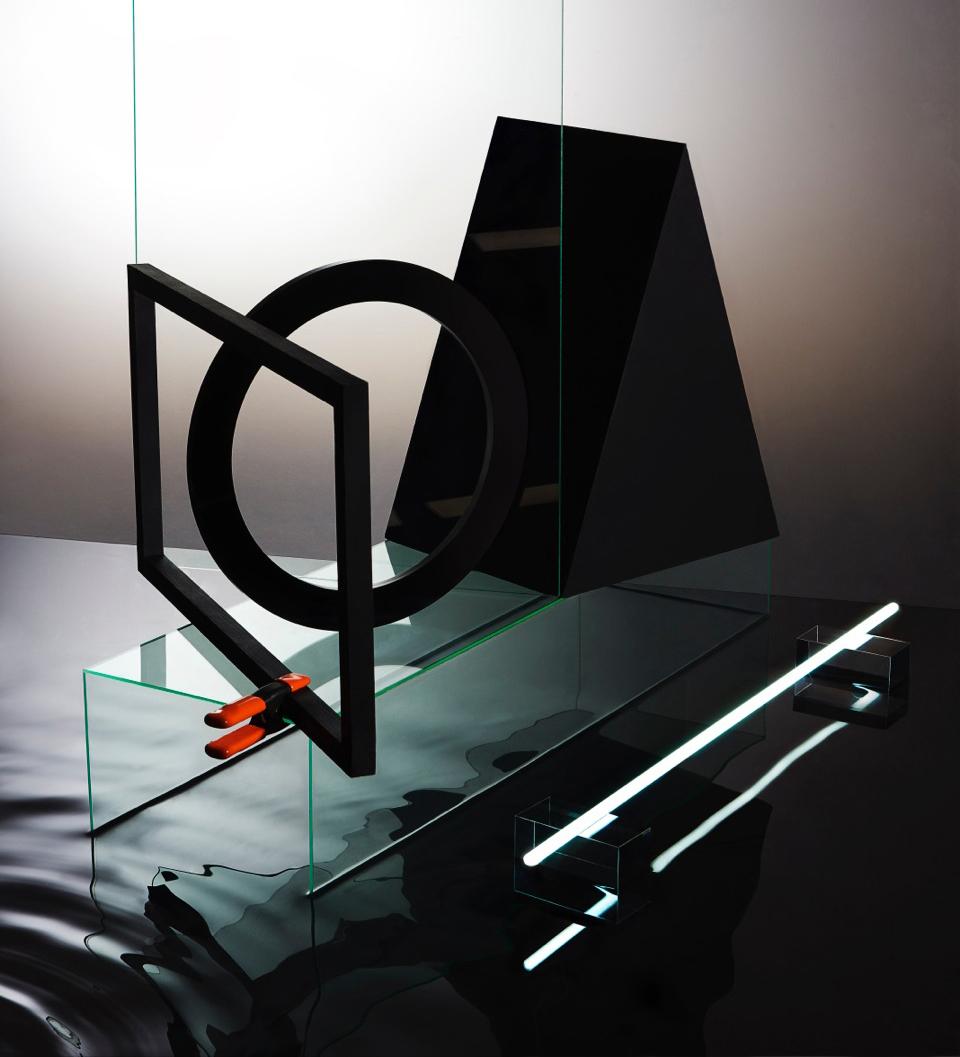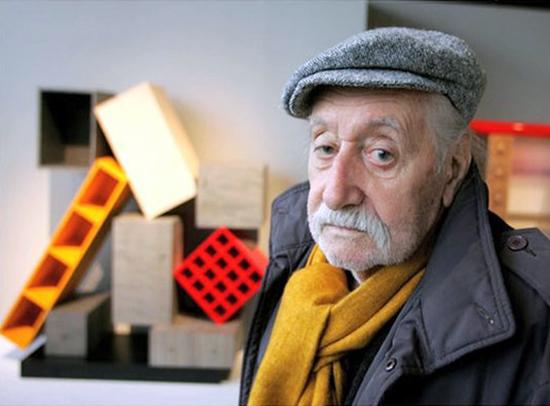
04.30.15
From the Library Of
Alex P. White, Artist
When we first met Brooklyn artist Alex P. White, it was in his role as a co-conspirator with interior designer Kelly Behun, with whom he’d created one of the most genius furniture collections in recent memory. But we’ve since gotten to know him as much, much more — as an interior designer and artist in his own right (whose playful project names include Playshroom and Wytchbytchru); as a designer whose latest furniture collection will debut in two weeks at Sight Unseen OFFSITE; and as the proprietor of a wonderfully specific Instagram feed, where we first stumbled upon this book in his rather extensive printed archive. When we asked him to write about Underground Interiors for our recurring From the Library column, we had no idea we’d get such a fun, deeply personal romp through its pages. If you’re into conversation pits, wall-to-ceiling carpeting, elephant side tables, geometric travertine, or tubular steel, we suggest you read on in full.
“In the 1970s, Playboy was my internet. I used to rummage through stacks of my Dad’s magazines — not discreetly hidden, I might add, but proudly displayed in his workshop, located just off our den. Our den was a custom-built world, complete with orange shag carpeting, a cork-covered bar and my Dad’s homemade plywood speakers, stained with layers of dark brown shellac and finished with orange burlap covers. I’d go-go dance on top of those speakers in leopard-print pajamas, listening to Ike and Tina Turner records, dreaming of my adult life with my very own conversation pit and diagonal wood decor. A huge part of my education and interests can be traced back to that den and those Playboys — it REALLY was all about the articles! Style, glamour, and sex have always been preoccupations to say the least.”
“I don’t remember exactly when I stumbled upon the book Underground Interiors: Decorating for Alternate Lifestyles but it was sometime during undergrad. It was like getting struck by lightning in that thrift store. I’d found me again, reunited with that child-self, searching for something “other” in those pages of <I>Playboy</I>. I’d been looking for a way to combine my interests — sculpture, painting, performance, and environments — and with Underground I realized that art as lifestyle, as interior design, was my work. I’ve been exploring that idea in one form or another for most of my career, striving to locate that delicate balance between art and design. Whenever I need inspiration, I’ll crack open Underground and remember that it’s sexy to break the rules.”
“Both authors — Norma Skurka and Oberto Gili — have had long careers in the interior design world, each with several books under their belt and many iconic images circulating out there in cyber space. Underground Interiors, published in 1972, locates these two tastemakers at the beginning of their careers, paying attention, along with their peers, to the anti-establishment movements in Europe and the emerging counter-cultural tastes in fashion, design, music and art. Norma and Oberto knew that real inventiveness and creativity were to be found in the interiors no one wanted to publish. I can imagine Norma sorting through the reject pile at the New York Times office, seeing and feeling the revolution she writes about so well in the book.”
“I love the language in Underground Interiors as much as the images. Norma dives deep into the political lingo of the era, and it gives a context for these interiors and turns a critical eye on interior design that you don’t often find in other “coffee table” books of the sort. In turn, it gives a type of cultural significance to the practice of interior design that I am always interested in reading about.”
“Norma writes, ‘Underground Interiors is not, as one might mistakenly infer from the title, an exploration into caves and subterranean living spaces. Rather, it is an exploration into the revolt against old concepts of decor and old ways of living — a look at the new living environments closely linked to recent developments in art, politics, and the press all of which have taken the name “underground” to distinguish them from their establishment counterparts. What has caused the revolution in the way some people are thinking about design and living environments? The answer — the theme of this book — is a rejection of the traditional ideas and concepts that aren’t working and, worse, seem to be leading the world to doom. The revolt centers on the conventional status symbols of fashionable design and decoration and also on the seriousness of modern architecture — neither of which leaves room for the emotional out-pouring of creative personalities, artists, counterculture groups and just plain people.'”
“The interiors in Underground have everything I strive for and care about in interior design — a sense of fantasy, breaking the rules, obsessiveness, dreamscapes, a mischievous and bizarre attitude, and, of course, being unapologetically self-expressive.”
